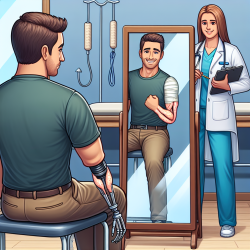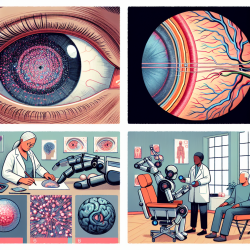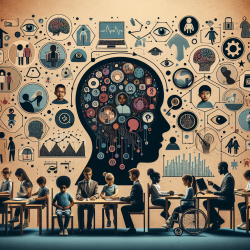Introduction
As a special education director, I am constantly seeking innovative approaches to enhance the care provided to students with unique needs. Recently, I came across a fascinating study titled A Study of the Amputee Experience of Viewing Self in the Mirror, which offers valuable insights into the therapeutic use of mirrors for individuals who have undergone limb amputation. This research presents an opportunity for healthcare practitioners to refine their skills and improve patient outcomes by integrating mirror therapy into their practice.
The Mirror Experience: A Journey of Acceptance
The study, conducted by Freysteinson et al. (2017), explores the trajectory of the mirror-viewing experience for amputees. It identifies key moments such as decision, seeing, and consent, and describes the emotional stages of mirror shock, mirror anguish, recognizing self, and acceptance of a new normal. These insights can guide practitioners in supporting patients through the challenging process of accepting their new body image.
Implementing Mirror Therapy in Practice
Healthcare professionals, including rehabilitation nurses, psychologists, and therapists, can benefit from understanding the therapeutic potential of mirrors. Here are some practical steps to incorporate mirror therapy into patient care:
- Supportive Environment: Ensure that the initial mirror-viewing experience is conducted in a private, supportive setting with a trusted healthcare provider or a peer who has undergone a similar experience.
- Gradual Introduction: Introduce mirrors gradually, starting with small mirrors for viewing the affected limb and progressing to full-length mirrors for a comprehensive view of the body.
- Patient Education: Educate patients about the potential emotional responses to mirror-viewing and reassure them that these reactions are normal and part of the healing process.
- Utilization of Mirrors: Encourage the use of mirrors for practical purposes such as assessing skin integrity, monitoring gait and balance, and enhancing body awareness.
Encouraging Further Research
While this study provides a foundation for understanding the mirror experience, there is a need for further research to explore the long-term psychological and physical benefits of mirror therapy for amputees. Practitioners are encouraged to participate in or initiate studies that investigate the impact of mirror interventions on quality of life and psychological well-being.
Conclusion
The insights gained from A Study of the Amputee Experience of Viewing Self in the Mirror offer a unique perspective on the role of mirrors in rehabilitation. By integrating these findings into practice, healthcare professionals can enhance the support provided to amputees, helping them navigate the emotional journey towards acceptance and a new normal. For those interested in delving deeper into the research, I highly recommend reading the original paper.
To read the original research paper, please follow this link: A Study of the Amputee Experience of Viewing Self in the Mirror.










